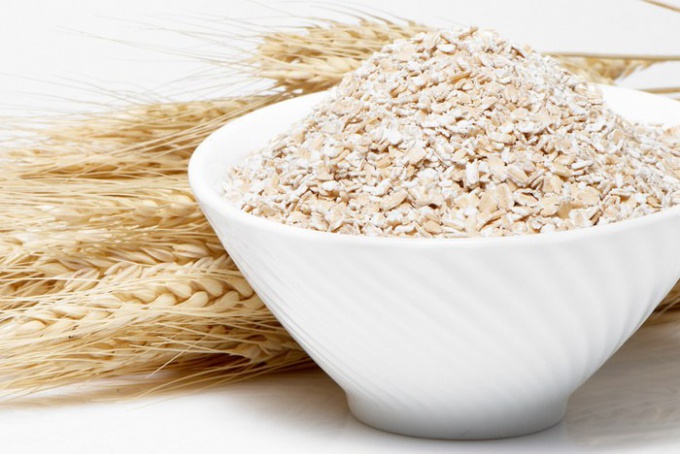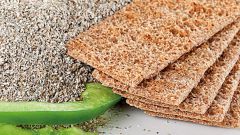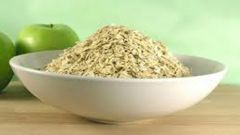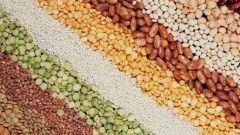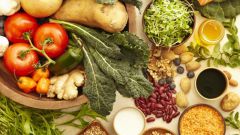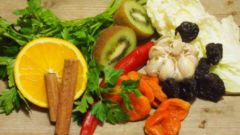Bran is the hard shell of grain, consisting of fibres that are not digested, but provide incredible benefit to the gastrointestinal tract. They often have loose texture, and can be sold in the form of bread or muesli. Quality fresh bran odorless and bitter, and their color is gray-brown. Pure bran do not contain additives, dyes and gluten.
Bran – essential dietary product, since they have low calorie content. Nutritional value of wheat bran is 165 kcal, rye – 221 kcal, rice – 316 kcal, and buckwheat – 365 kcal per 100 g of product. For weight loss often use oat bran, which contain 120 calories. They are perfect substitute white bread, which consists of empty refined flour and starch.
All the bran is rich in valuable biological substances. Vitamin E helps to rejuvenate the body cells, and in combination with selenium it is involved in oxidative processes and DNA synthesis. Wheat bran consists of insoluble fiber and contain vitamins b, PP, provitamin a, and also magnesium, chromium, potassium, zinc and other useful minerals. Due to such structure, wheat bran refers to the perfect dietary product that also has a healing effect on the intestinal microflora.
Oat and barley bran contain soluble fiber, thanks to which reduces the level of cholesterol in the blood. Studies have shown that such 60 g of bran a day is enough to reduce cholesterol by 7-10%.
The scientists found that the daily consumption of bran normalizes the gastrointestinal tract, from the gut derived microbes, toxins, toxic salts and heavy metals. Due to the high content of potassium, magnesium and vitamins, bran normalize blood sugar, reduce blood pressure and help you lose weight. Bran is used in many diets, they quickly give the feeling of satiety and reduced calorie, and fiber improves metabolism.
In cooking bran widespread, as well as healthy and improves the taste additive to dough for bread and pastries. They are also a good ingredient for meatballs, sauces, vegetables, salads, soups and other dishes.
Bran is widely used in different areas of cosmetology. Mixing with milk, water or oils, they are used to make natural masks for face and hair, scrubs for the skin, as well as bathing.
Bran – essential dietary product, since they have low calorie content. Nutritional value of wheat bran is 165 kcal, rye – 221 kcal, rice – 316 kcal, and buckwheat – 365 kcal per 100 g of product. For weight loss often use oat bran, which contain 120 calories. They are perfect substitute white bread, which consists of empty refined flour and starch.
All the bran is rich in valuable biological substances. Vitamin E helps to rejuvenate the body cells, and in combination with selenium it is involved in oxidative processes and DNA synthesis. Wheat bran consists of insoluble fiber and contain vitamins b, PP, provitamin a, and also magnesium, chromium, potassium, zinc and other useful minerals. Due to such structure, wheat bran refers to the perfect dietary product that also has a healing effect on the intestinal microflora.
Oat and barley bran contain soluble fiber, thanks to which reduces the level of cholesterol in the blood. Studies have shown that such 60 g of bran a day is enough to reduce cholesterol by 7-10%.
The scientists found that the daily consumption of bran normalizes the gastrointestinal tract, from the gut derived microbes, toxins, toxic salts and heavy metals. Due to the high content of potassium, magnesium and vitamins, bran normalize blood sugar, reduce blood pressure and help you lose weight. Bran is used in many diets, they quickly give the feeling of satiety and reduced calorie, and fiber improves metabolism.
In cooking bran widespread, as well as healthy and improves the taste additive to dough for bread and pastries. They are also a good ingredient for meatballs, sauces, vegetables, salads, soups and other dishes.
Bran is widely used in different areas of cosmetology. Mixing with milk, water or oils, they are used to make natural masks for face and hair, scrubs for the skin, as well as bathing.
